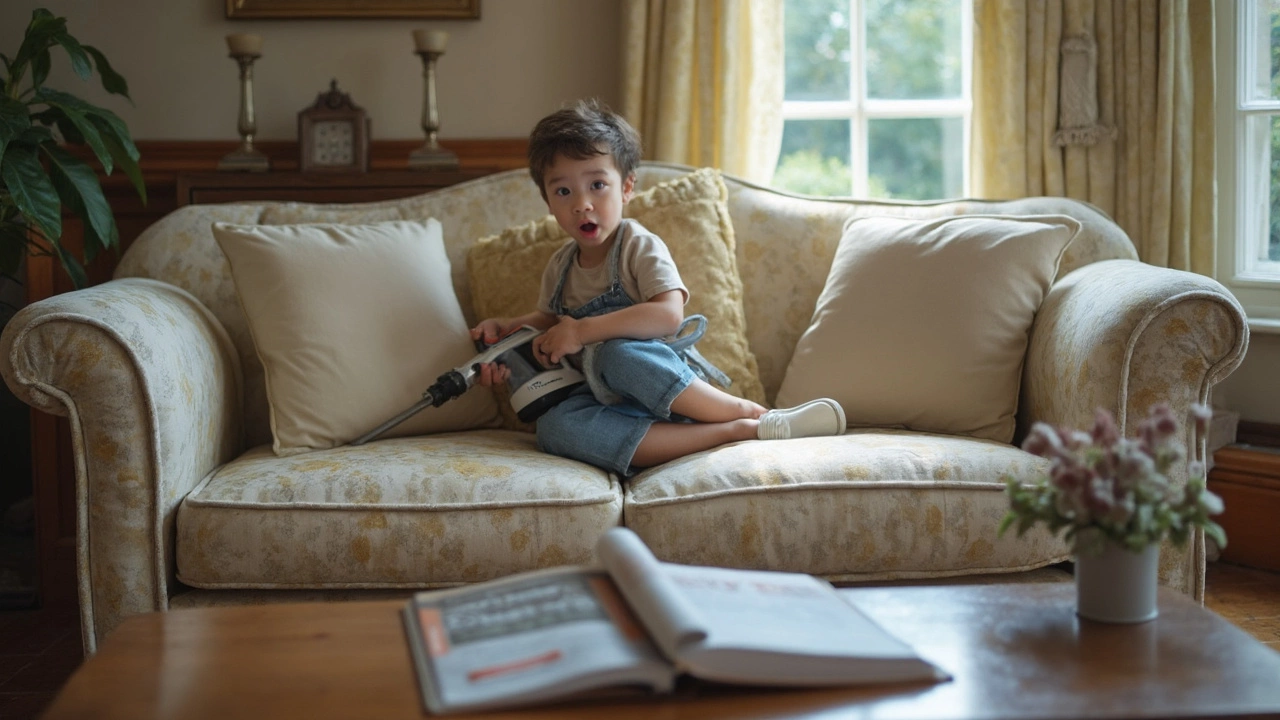Upholstery Cleaning Tips You Can Use Right Now
Got a couch that looks tired, a chair with a coffee ring, or a sofa that smells old? You don’t need a pricey service to bring it back to life. With a few everyday items and the right steps, you can clean upholstery safely and keep it looking great for years.
First, always check the care label. Most fabric sofas have a code like "W" (water‑based cleaner only), "S" (solvent only), or "WS" (both ok). This label tells you what kind of liquid you can use without ruining the fabric. If you can’t find a tag, test any cleaner on a hidden spot for a few minutes. If the color stays the same, you’re good to go.
Common Mistakes to Avoid
It’s easy to slip up when you’re in a hurry. One big no‑no is soaking the fabric. Too much water can seep into the padding, cause mold, or leave a sticky residue. Instead, spray a light mist or apply cleaner with a soft cloth, then blot, don’t rub. Rubbing can push the stain deeper and wear out fibers.
Another mistake is using harsh chemicals like bleach on colored upholstery. Bleach can scorch the fabric and create unsightly spots. Stick with mild dish soap, white vinegar, or a purpose‑made upholstery cleaner. And avoid shaking a powder directly onto the couch – it can leave gritty marks. Finally, don’t neglect the cushion covers. Many people clean the visible surface but forget to lift the cushions, vacuum the underside, and clean the seams where dirt hides.
DIY Cleaner Recipes That Work
If you prefer a homemade solution, you’ve got a few reliable formulas. For general dirt, mix one cup warm water, a tablespoon of gentle dish soap, and a teaspoon of white vinegar. Put the mixture in a spray bottle, lightly mist the area, and wipe with a clean microfiber cloth. The vinegar helps cut grease while the soap lifts grime.
Stubborn stains like wine, juice, or pet accidents need a bit more punch. Combine two parts hydrogen peroxide (3%) with one part dish soap and a splash of baking soda. Apply only to the stain, let it bubble for a minute, then blot. The peroxide breaks down the stain, the soap lifts it, and the baking soda neutralises odors.
For delicate fabrics that only allow solvent cleaning (code "S"), mix equal parts rubbing alcohol and water, add a drop of dish soap, and test first. This blend evaporates quickly and won’t soak the padding.
After any cleaning, let the upholstery air dry completely. Open windows or use a fan to speed up the process. Once dry, give the fabric a quick vacuum with a brush attachment to restore the nap.
These tips cover the basics, but remember every piece of furniture is a little different. When in doubt, start with the mildest method and work up if needed. With a bit of care, your upholstery will stay fresh, look good, and last longer.

When Should You Not Use Steam for Upholstery Cleaning?
Steam cleaning seems like a wonder tool for dirty upholstery, but it’s not always the right move. This article goes over when you should skip the steam and why it could ruin your furniture instead of refreshing it. Get a real-world look at how certain fabrics, stains, and finishes react badly to steam. You’ll find practical tips for safe upholstery cleaning and clear info on spotting problem fabrics. Don’t risk wrecking your sofa—learn the warning signs first.
Read More